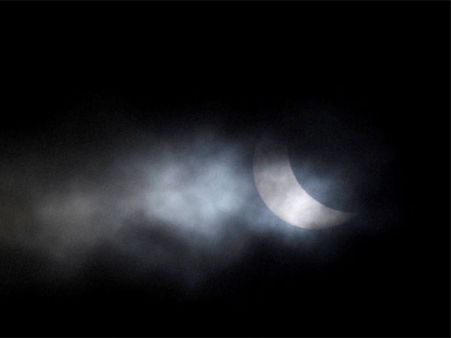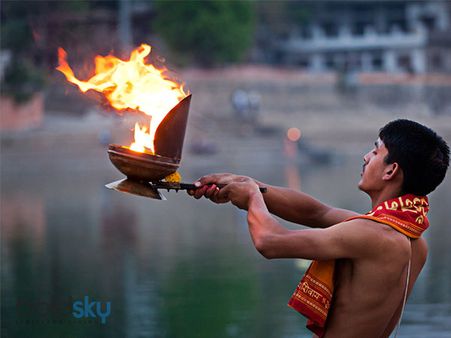Just In
- 28 min ago

- 42 min ago

- 4 hrs ago

- 10 hrs ago

Don't Miss
- Movies
 Chief Detective 1958 Episode 2 OTT Release Date, Time, Platform: When & Where To Watch? What To Expect? DEETS
Chief Detective 1958 Episode 2 OTT Release Date, Time, Platform: When & Where To Watch? What To Expect? DEETS - Sports
 IPL 2024: LSG vs CSK Award Winners, Man of The Match, Post-Match Presentation, Scorecard & Records
IPL 2024: LSG vs CSK Award Winners, Man of The Match, Post-Match Presentation, Scorecard & Records - News
 Chinese President Xi Jinping Orders Biggest Military Reorganisation Since 2015
Chinese President Xi Jinping Orders Biggest Military Reorganisation Since 2015 - Education
 Exam Pressure Does Not Exist; Studying Punctually is Crucial; Says Aditi, the PSEB 2024 Topper
Exam Pressure Does Not Exist; Studying Punctually is Crucial; Says Aditi, the PSEB 2024 Topper - Finance
 Reliance, ONGC, Tata, Adanis: Energy Stocks Didn't Get The Memo Of Bears, Up 12% In 30-Days; 10 Stocks To BUY
Reliance, ONGC, Tata, Adanis: Energy Stocks Didn't Get The Memo Of Bears, Up 12% In 30-Days; 10 Stocks To BUY - Automobiles
 Suzuki Swift Hatchback Scores 4 Star Safety Rating At JNCAP – ADAS, New Engine & More
Suzuki Swift Hatchback Scores 4 Star Safety Rating At JNCAP – ADAS, New Engine & More - Technology
 Dell Introduces AI-Powered Laptops and Mobile Workstations for Enterprises in India
Dell Introduces AI-Powered Laptops and Mobile Workstations for Enterprises in India - Travel
 Journey From Delhi To Ooty: Top Transport Options And Attractions
Journey From Delhi To Ooty: Top Transport Options And Attractions
September 8 & 9: Aghora Chaturdashi And Kushagrahini Amavasya
September 8 and 9 will be auspicious days meant for the devotees of Lord Shiva. Lord Shiva along with Goddess Parvati is worshipped on these days. It is a two-day festival celebrated on the fourteenth and the fifteenth day during the Krishna Paksha in the month of Bhadrapad. The first day is known as Aghora Chaturdashi and the second day is called Kusha Grahini Amavasya. While the former is also known as Chhoti Dagyali, the latter is given the name of Badi Dagyali as well.

Some people also observe a fast on the Chaturdashi day. Observing both these days is believed to wash away all the past sins of the devotees. It also brings peace to the long dead ancestors who then give their blessings to the observer of the festival.

Aghora Chaturdashi And Kusha Grahini Amavasya Dates This Year
While the Aghora Chaturdashi will be observed on September 8, the Kusha Grahini Amavasya will be observed on September 9, 2018. On the second day, the rituals associated with the ancestors are performed. Here we have brought to you some important information on this festival observed for two days. Take a look.

Aghora Chaturdashi Significance
The festival Aghora Chaturdashi is mainly celebrated in the North Indian regions of Himachal Pradesh, Uttarakhand, Sikkim and Nepal. People wake up early in the morning and perform puja before Lord Shiva. Pitra Daan rituals are also performed on this day.
The day is considered for other rituals such as holy bath, donation etc. as well. People also cover their windows and doors with thorny bushes on this day, in some regions of India. This is done in order to protect themselves from evil spirits.

Kusha Grahini Amavasya Significance
The
second
day,
Kusha
Grahini
Amavasya
is
observed
for
paying
gratitude
to
the
ancestors.
Every
Amavasya
is
dedicated
to
the
worship
of
ancestors,
who
are
known
as
Pitra
Deva
as
per
Hindu
scriptures.
Ceremonies
such
as
Yajnas
and
Pitra
Tarpan,
for
the
peace
of
the
dead
ancestors
are
performed
on
this
day.
This
also
helps
in
getting
the
blessings
of
the
long
dead
ancestors.
The
day
derives
its
name
from
the
ritual
performed
using
Kusha
grass.


The Ritual Of Kusha Grass
Kusha grass is considered very auspicious for the use in puja rituals. Ten types of grass have been described in the scriptures. Kusha grass is the one which is dark green in colour and has seven leaves. This grass should be uprooted and then stored for performing all the rituals.
The grass leaves should not be damaged at all, and full and fresh leaves should be used. The mantra 'Hum Phat Swaha' should be chanted while one plucks the grass. This grass can then be used during any holy ritual.
-
 yoga spiritualityThrissur Pooram 2024: Date, Time, History, Significance, And Celebrations Related To Kerala's Rich Traditions
yoga spiritualityThrissur Pooram 2024: Date, Time, History, Significance, And Celebrations Related To Kerala's Rich Traditions -
 yoga spiritualityKamada Ekadashi 2024 Wishes: Greetings, Messages, Texts, Images, Twitter Status And Instagram Captions
yoga spiritualityKamada Ekadashi 2024 Wishes: Greetings, Messages, Texts, Images, Twitter Status And Instagram Captions -
 yoga spiritualityChaitra Navratri 2024 Day 9: Maa Siddhidatri Puja Vidhi, Vrat Katha, Mantra, And Aarti Lyrics
yoga spiritualityChaitra Navratri 2024 Day 9: Maa Siddhidatri Puja Vidhi, Vrat Katha, Mantra, And Aarti Lyrics -
 yoga spiritualityKamada Ekadashi 2024 Mantras To Chant On This Auspicious Day To Fulfill Desires
yoga spiritualityKamada Ekadashi 2024 Mantras To Chant On This Auspicious Day To Fulfill Desires -
 yoga spiritualityChaitra Navratri 2024 Day 8: Maa Mahagauri Puja Vidhi, Vrat Katha, Mantra, And Aarti Lyrics
yoga spiritualityChaitra Navratri 2024 Day 8: Maa Mahagauri Puja Vidhi, Vrat Katha, Mantra, And Aarti Lyrics -
 yoga spiritualityChaitra Durga Ashtami 2024 Wishes, Greetings, Messages, Images, Posters, Twitter, And Instagram Status
yoga spiritualityChaitra Durga Ashtami 2024 Wishes, Greetings, Messages, Images, Posters, Twitter, And Instagram Status -
 astrologyRam Navami 2024: Lucky Zodiac Signs Who Will Get Special Blessings Of Lord Rama And Will Be More Fortunate
astrologyRam Navami 2024: Lucky Zodiac Signs Who Will Get Special Blessings Of Lord Rama And Will Be More Fortunate -
 yoga spiritualityWhen Is Kamada Ekadashi 2024? Confirmed Date, Puja Rituals, Why Fasting Is Significant On This Day
yoga spiritualityWhen Is Kamada Ekadashi 2024? Confirmed Date, Puja Rituals, Why Fasting Is Significant On This Day -
 yoga spiritualityChaitra Navratri 2024 Day 7: Maa Kalratri Puja Vidhi, Vrat Katha, Mantra and Aarti Lyrics
yoga spiritualityChaitra Navratri 2024 Day 7: Maa Kalratri Puja Vidhi, Vrat Katha, Mantra and Aarti Lyrics -
 yoga spiritualityChaitra Navratri 2024 Day 6: Maa Katyayani Puja Vidhi, Vrat Katha, Mantra and Aarti Lyrics
yoga spiritualityChaitra Navratri 2024 Day 6: Maa Katyayani Puja Vidhi, Vrat Katha, Mantra and Aarti Lyrics -
 yoga spiritualityChaiti Chhath Puja 2024 Wishes, Greetings, Texts, Messages, Images, WhatsApp, Twitter And Instagram Status
yoga spiritualityChaiti Chhath Puja 2024 Wishes, Greetings, Texts, Messages, Images, WhatsApp, Twitter And Instagram Status -
 yoga spiritualityChaitra Navratri 2024 Day 5: Maa Skandmata Puja Vidhi, Katha, Mantra And Aarti
yoga spiritualityChaitra Navratri 2024 Day 5: Maa Skandmata Puja Vidhi, Katha, Mantra And Aarti


 Click it and Unblock the Notifications
Click it and Unblock the Notifications



